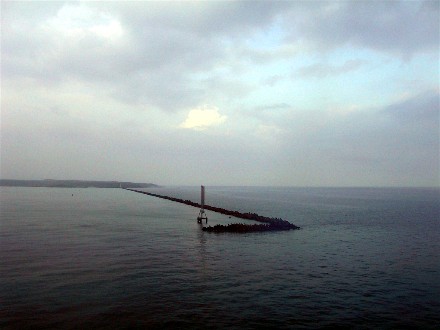
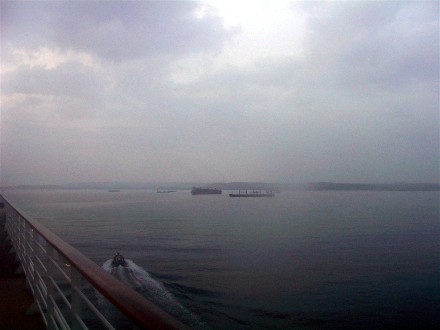
It was foggy the morning of April 30th, but we had some clear spots as we approached the Panama Canal:


The Summit had an expert speaker, Stewart (Stew) Nelson, and he had been entertaining us about the Panama Canal during our voyage. It was fun to see all the ships waiting on this end of the canal. The Panama Canal might go from the Atlantic Ocean to the Pacific Ocean, but because of the shape of Panama it actually runs SE and the Pacific end is SE of the Atlantic end.
We could also see the city skyline a bit:
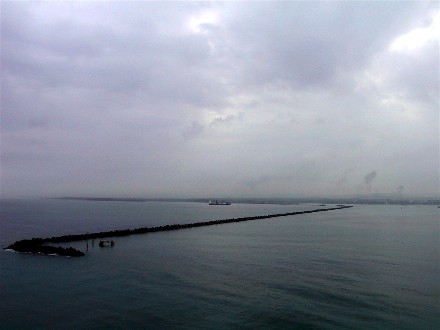
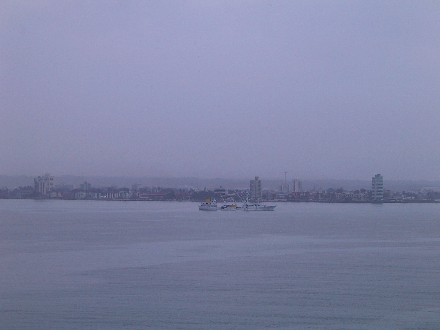
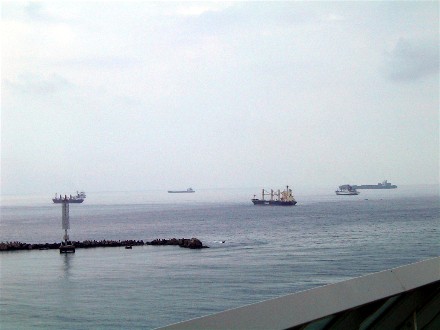
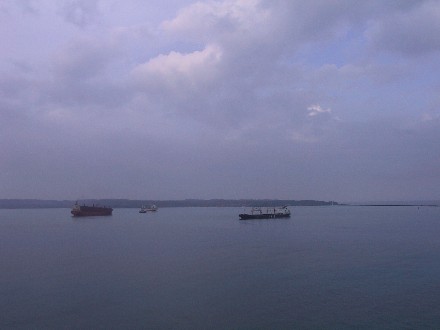
Here comes the Panamanian tour guide:
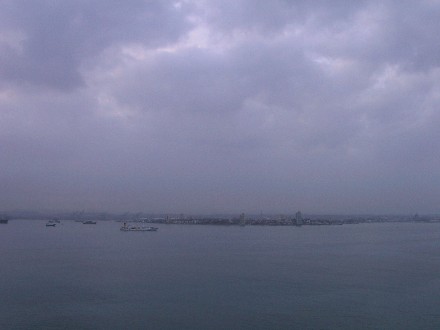
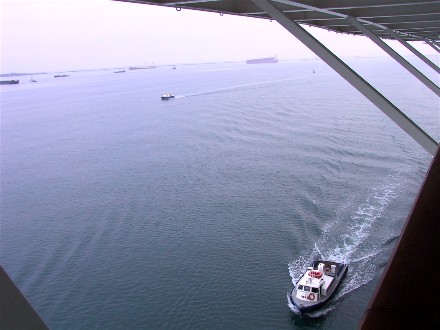
Even though the Summit had an expert on the canal aboard the Panamanian authorities supply their own and require the cruise ship to use them. They also require the ship to refuel and leave its garbage when the transit is complete and to pay a transit fee based on ship size in nautical tons (a volume measure) for the transit. All of this must be paid by the shipping company in cash and everything possible is paid in advance. The Summit is a "Panamax" ship, as large as possible but still able to transit the Panama Canal. The Coral Princess is slightly larger in nautical tons than the Summit but still Panamax, so it pays the most to transit the canal of any ship. It costs Celebrity over $225,000 just for the transit of the Summit. The Panamanian government makes money on the canal, but must keep the cost lower than going around the south of South America.
We hadn't had breakfast yet so we headed to the buffets and nabbed a window seat. Here is the French canal, which is how the canal started before the French company went bankrupt, plus a view of the surrounding land:
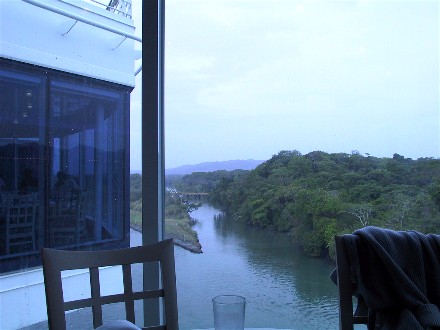
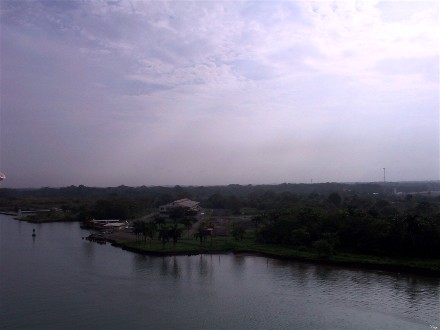
Now we were approaching the first lock so out we went for the show, we were not alone:
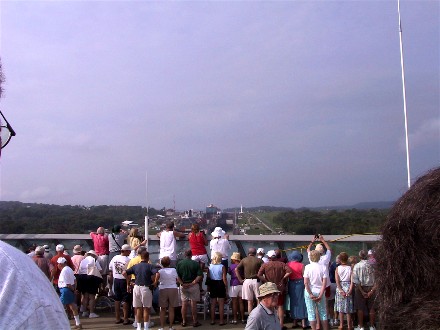
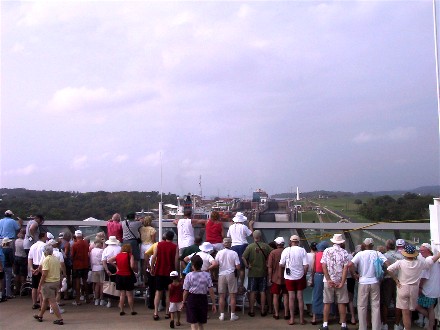
We shared the locks with some freighters going in both directions:
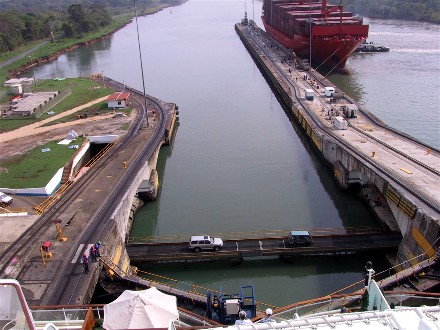
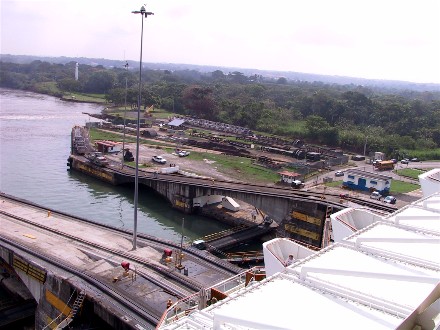
It was getting hot:
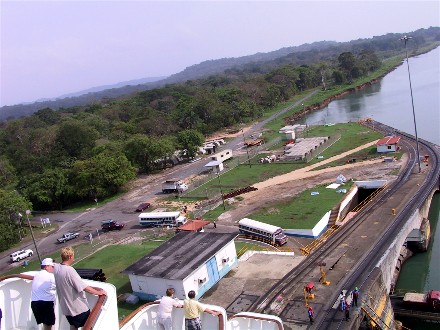
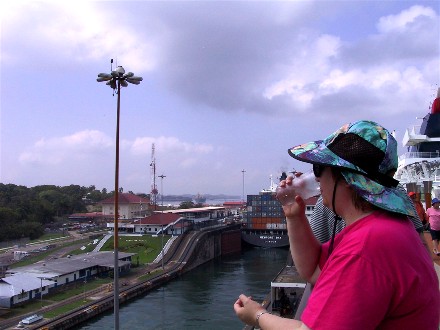
We were through the locks and came into Gatun Lake, we could see the electric dam on the right:
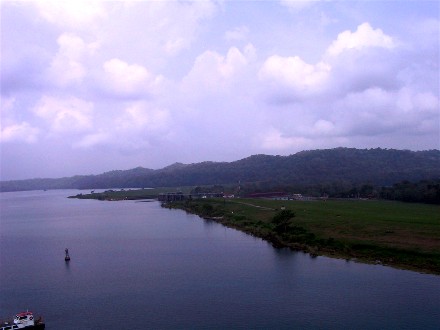
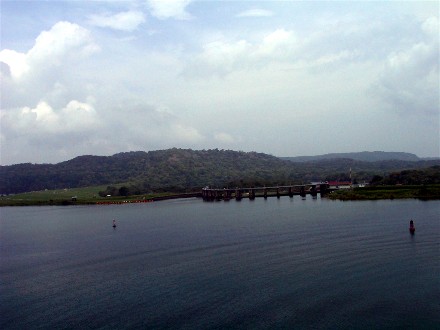
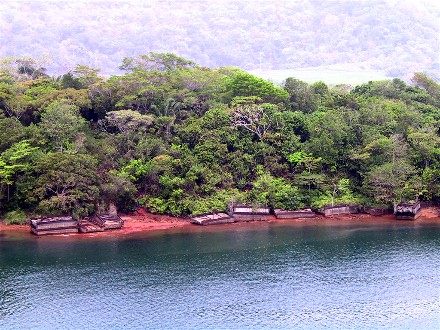
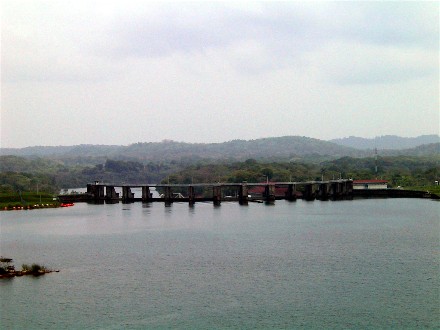
The Panama Canal works because of rainfall and there is more than is needed to run the locks, so they use the rest to make electricity. Panama makes sure it has enough water for the locks by using a reservoir in the mountains.
People were looking for monkeys in the trees and we saw lots of equipment and small industrial areas:
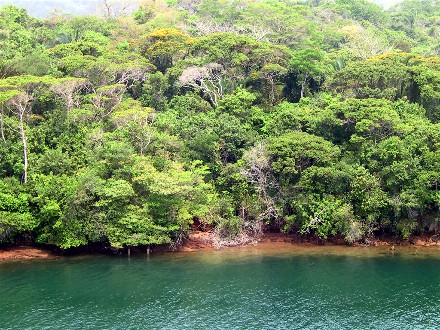
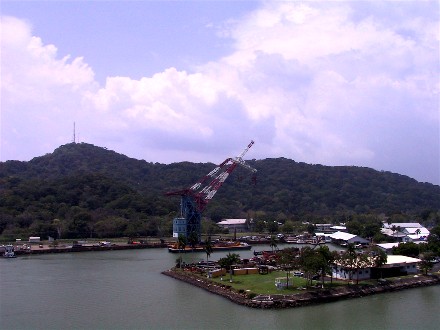
Here is where the river comes in that feeds the lake:
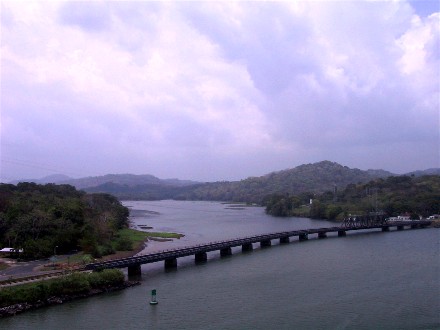
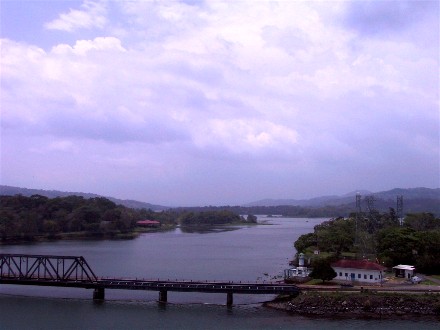
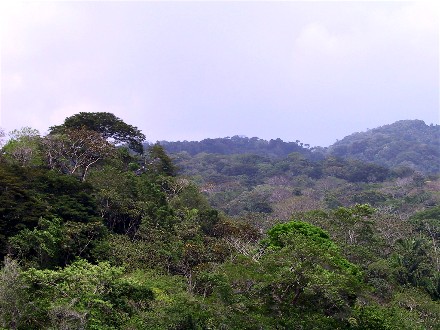
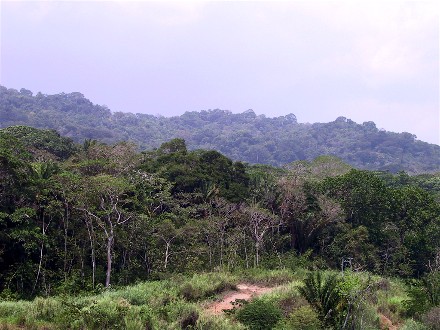
It was hot and we were coming to the narrow part of the canal where they have to reinforce the canal walls. Then it started to rain and most people retreated indoors. Diane had already moved to the fitness room which had windows facing forward, but Bill stayed and took pictures and enjoyed the coolness the rain brought:
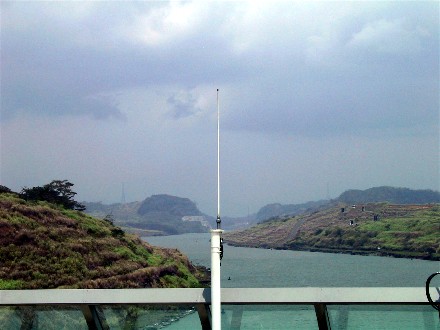
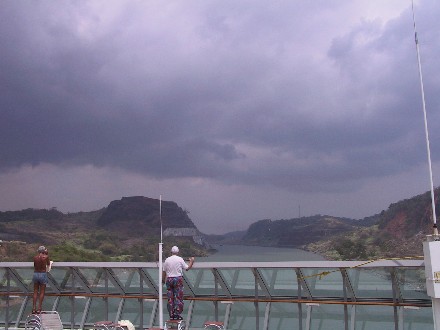
We were being watched from land:
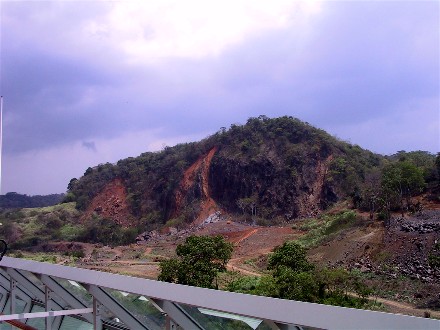
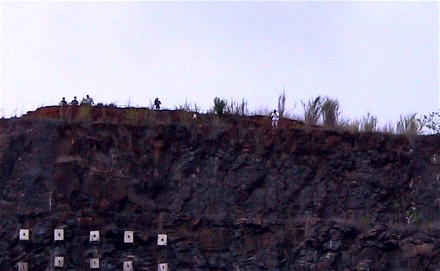
Now we were coming to the second set of locks, getting down to the Pacific is in two stages:
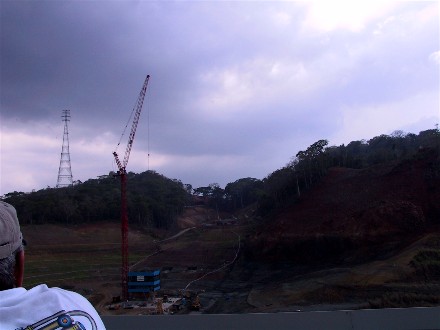
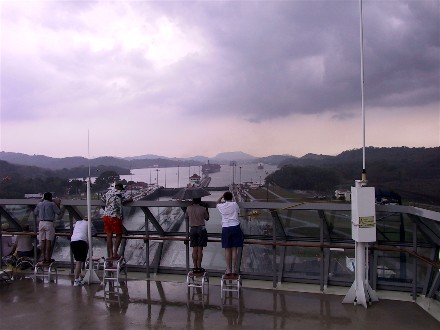
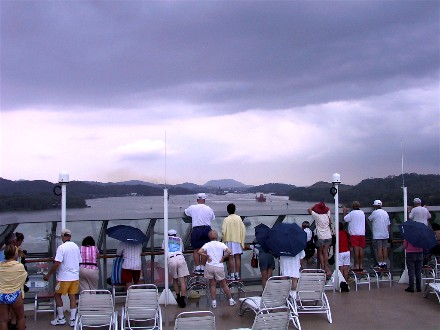
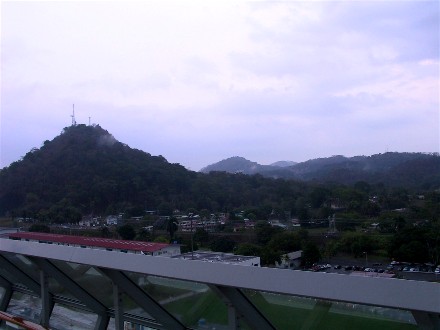
Heading for the last set of locks:
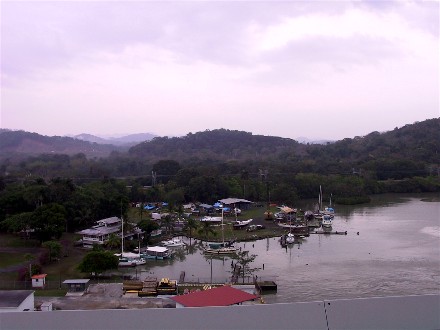
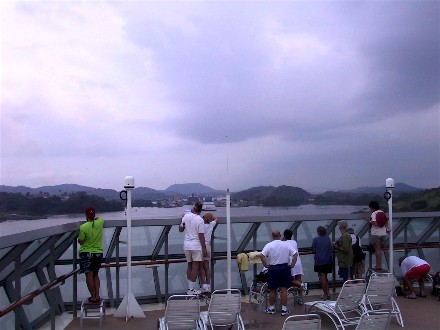
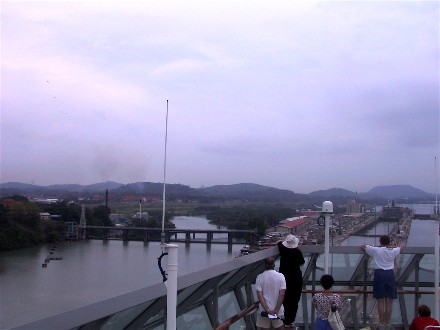
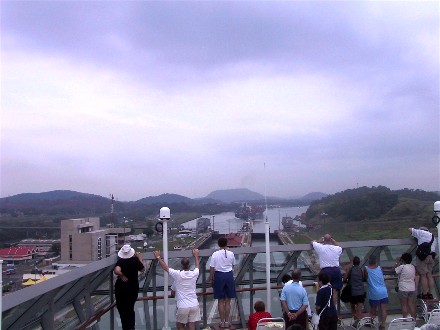
This is the official viewing area and has a camera on the top of a tower transmitting to the internet: .
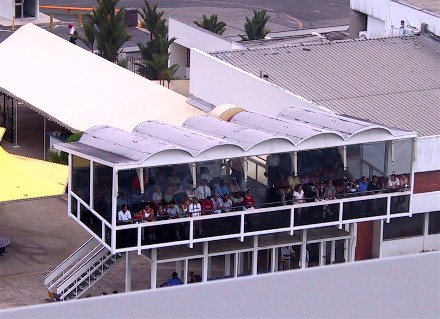
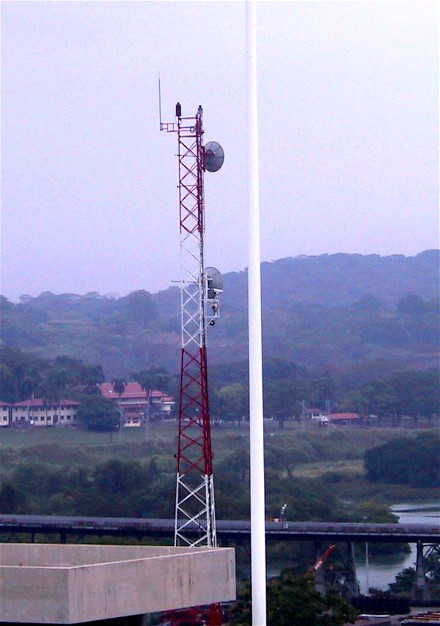
People were calling on their cell phones and having their friends and relatives watch us transit on the internet at the Miraflores Locks. (It looks like they added more cameras now, there used to be just the one at Miraflores Locks).
We could see the Americas bridge ahead and Panama City to the left (port):
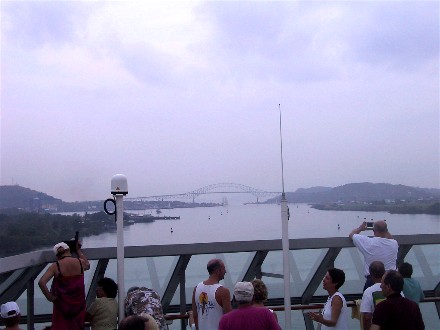
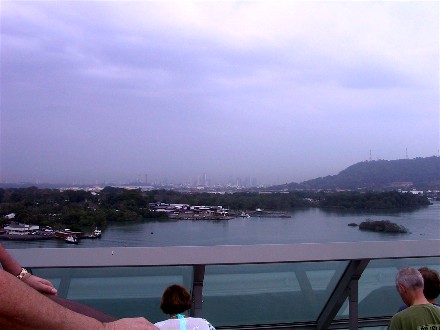
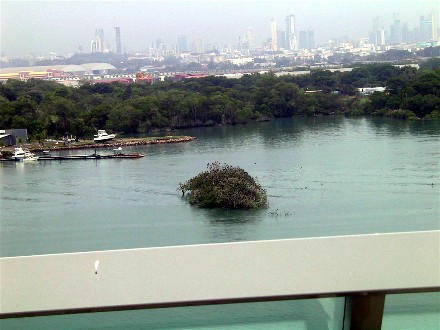
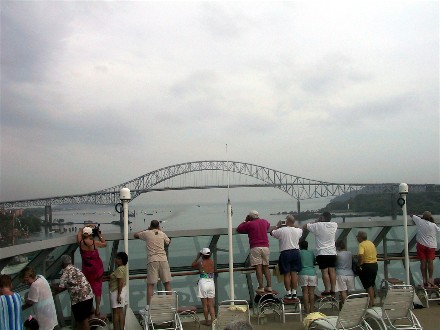
Bill noticed some of our table mates, he is in white and she in brown/green, just before we went under the bridge:
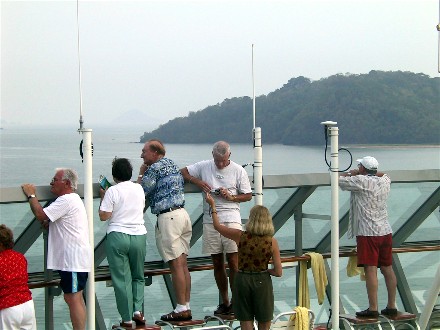
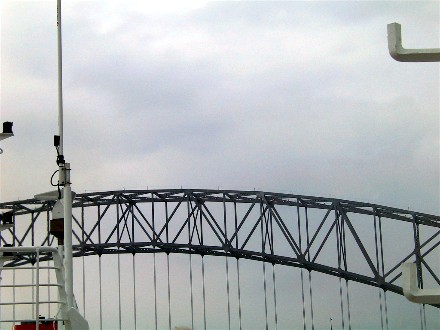
We are in the Pacific Ocean now, time to get ready for dinner:
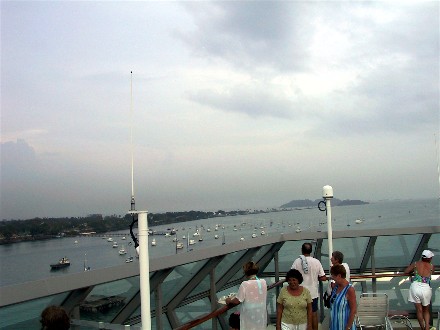
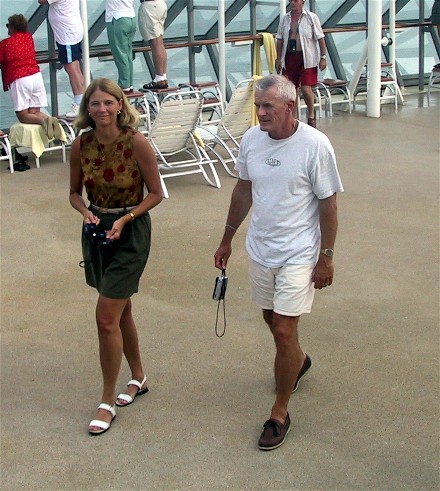
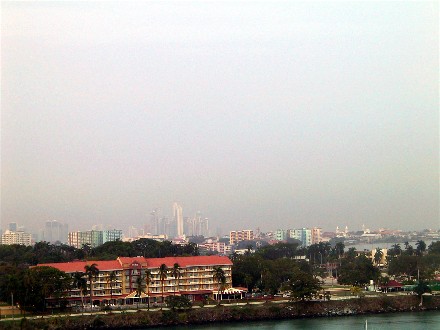
The ship moved into the ocean in front of Panama City and transferred its garbage to a Panamanian barge and filled its fuel tank. We sailed to Costa Rica in the night.